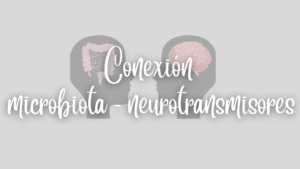
Como hemos comentado en numerosas ocasiones, un cambio dramático persistente en la dieta y el estilo de vida puede dañar la simbiosis entre la microbiota y el ser humano produciendo una disfuncionalidad en la señalización de las neuronas periféricas.
Nuestro Sistema nervioso central está compuesto por neuronas que coordinan funciones intestinales como la motilidad gastrointestinal, digestión, inmunidad, el comportamiento alimentario y la homeostasis de glucosa y lípidos, entre otras.
Cabe destacar el alto grado de intercomunicación que presentan el intestino y el sistema nervioso periférico.
LAS NEURONAS
- Las neuronas vagales y espinales inervan el tacto digestivo monitoreando las señales mecánicas, químicas, térmicas y nociceptivas relacionadas con la dieta y la microbiota.
- Las neuronas eferentes simpáticas y parasimpáticas se segregan en función de las funciones que ayudan en las respuestas de estrés (lucha o huida) o que vuelven a la línea de base (descanso y digestión).
- Las neuronas aferentes vagales responden a las alteraciones en la microbiota intestinal y modulan la motilidad intestinal.
- Las neuronas sensoriales detectan diversas sustancias químicas o la distención causada por el bolo alimenticio y coordinan la actividad eléctrica de las neuronas y vinculan la actividad de las redes motoras para permitir que el “pequeño cerebro” del intestino funcione de manera autónoma.
El sistema nervioso entérico puede funcionar de manera autónoma para digerir una comida, pero la función de estas neuronas está modulada por los nervios autónomos según el estado interno.
MECANISMOS MOLECULARES QUE MEDIAN LA COMUNICACIÓN MICROBIOTA – SNP
Las células endoteliales (EECs) representan una parte muy importante de la vía hormonal de comunicación entre el intestino y el SNP. Responden a subproductos químicos y moléculas que son liberadas por las bacterias intestinales que, a su vez, liberan neuropéptidos que son capaces de activar las neuronas sensoriales para dirigirse directamente a los tejidos efectores y controlar así el vaciamiento gástrico, motilidad intestinal, liberación de la insulina, saciedad y hambre.
- Lipopolisacárido (LPS) y ácido lipoproteicoico (LTA)
Los niveles de LPS circulantes se alteran según la dieta de manera que cuanto más peso, aumentan los niveles de LPS.
La interrupción de la señalización en las neuronas entéricas puede contribuir a deficiencias en el desarrollo nervioso entérico, motilidad intestinal, inmunidad y la percepción visceral.
- Serotonina
Las bacterias intestinales regulan la producción y liberación de seortonina gracias a los ácidos biliares procedentes de su metabolismo
La serotonina ajusta la motilidad, la inflamación intestinal y el dolor visceral
- Ácidos biliares
Son producidos por el hígado y secretados en el intestino para emulsionar la grasa y el colesterol de la dieta. Las bacterias pueden modificar estos ácidos y convertirlos en moléculas de señalización que regulan el comportamiento de la alimentación (reducen la ingesta de alimentos previniendo la obesidad inducida por la dieta y regula la homeostasis de glucosa).
- GABA
Es un neurotransmisor que puede ser producido por varios Lactobacillus y Bifidobacterias que controla el vaciado gástrico, la motilidad y las secreciones digestivas.
Un aumento de GABA supone una mejora de la sensibilidad a la insulina y por lo tanto una mejora del síndrome metabólico.
- Ácidos grasos de cadena corta
Producidos por la fermentación de la fibra por varios géneros de bacterias. Regulan la gluconeogénesis intestinal, el ritmo cardiaco, el gasto d energía y la ingesta de alimentos (el comportamiento de alimentación a corto plazo en adultos).
- Transcripción regulada de cocaína- anfetamina (CART)
CART en un neuropéptido expresado en el SNC que se modula en función del estado de alimentación por la microbiota y regula la homeóstasis de glucosa a través de la comunicación directa con el páncreas y el hígado.
COMUNICACIÓN DE LA MICROBIOTA INTESTINAL AL SNP COMO DIANA TERAPÉUTICA
Los nervios sensoriales y autónomos que inervan el tracto gastrointestinal son sensibles a la infección, inflamación y los metabolitos locales que pueden provocar cambios en la homeostasis de la energía y glucosa, déficit de motilidad GI, SSI, dispepsia, diabetes u obesidad.
Los tratamientos dirigidos a la microbiota para estas dolencias vienen en forma de prebióticos, probióticos, posbióticos y transplante de la microbiota fecal.